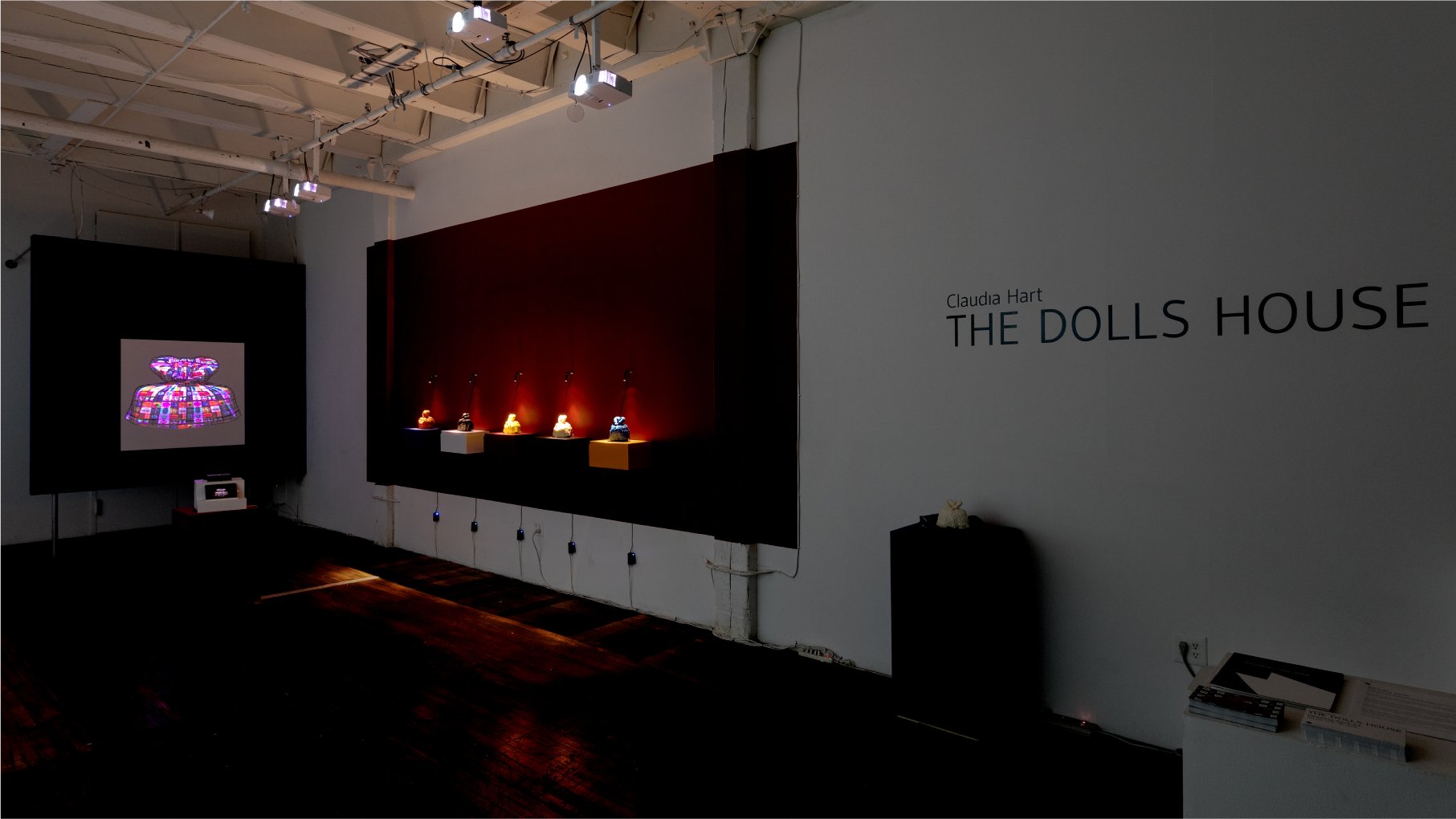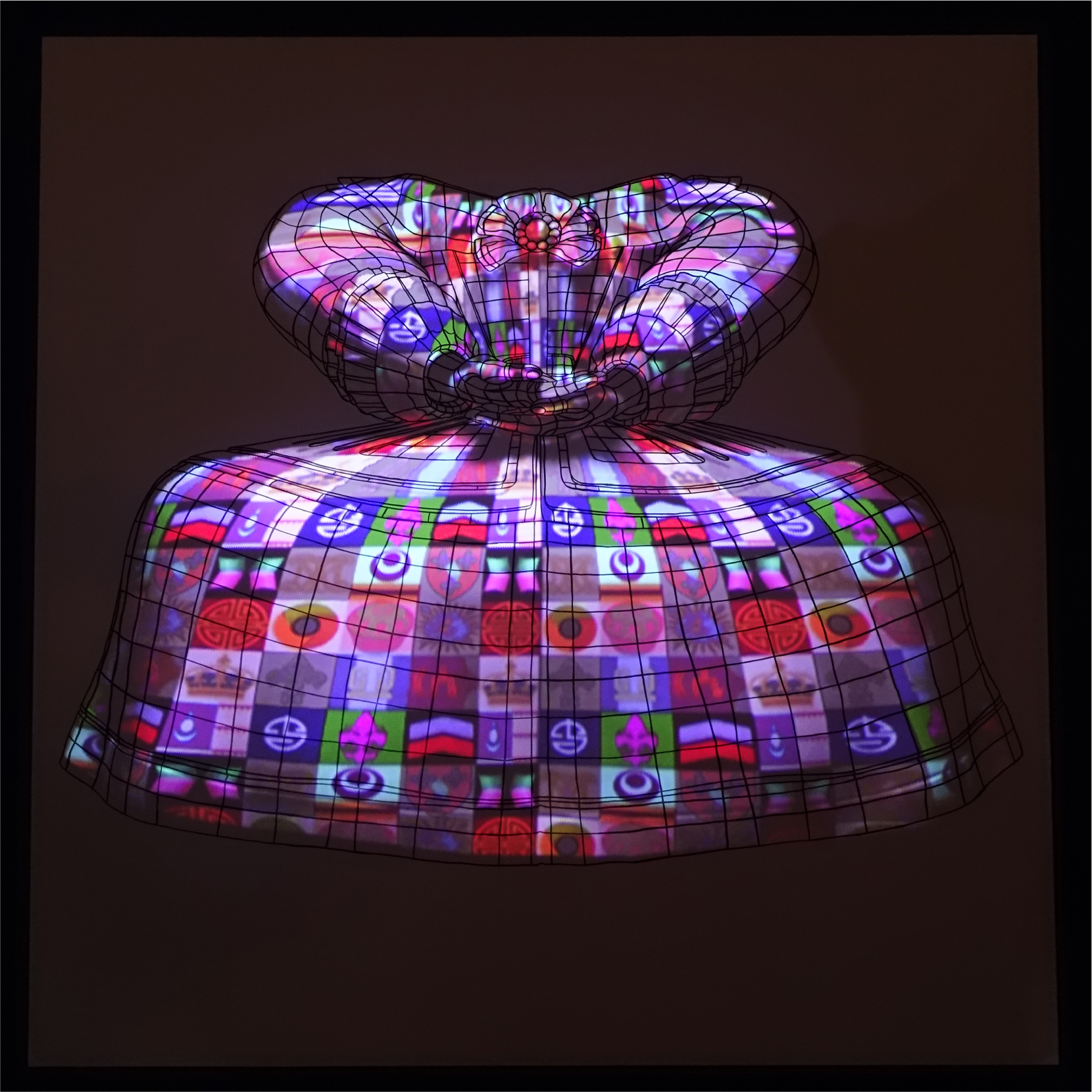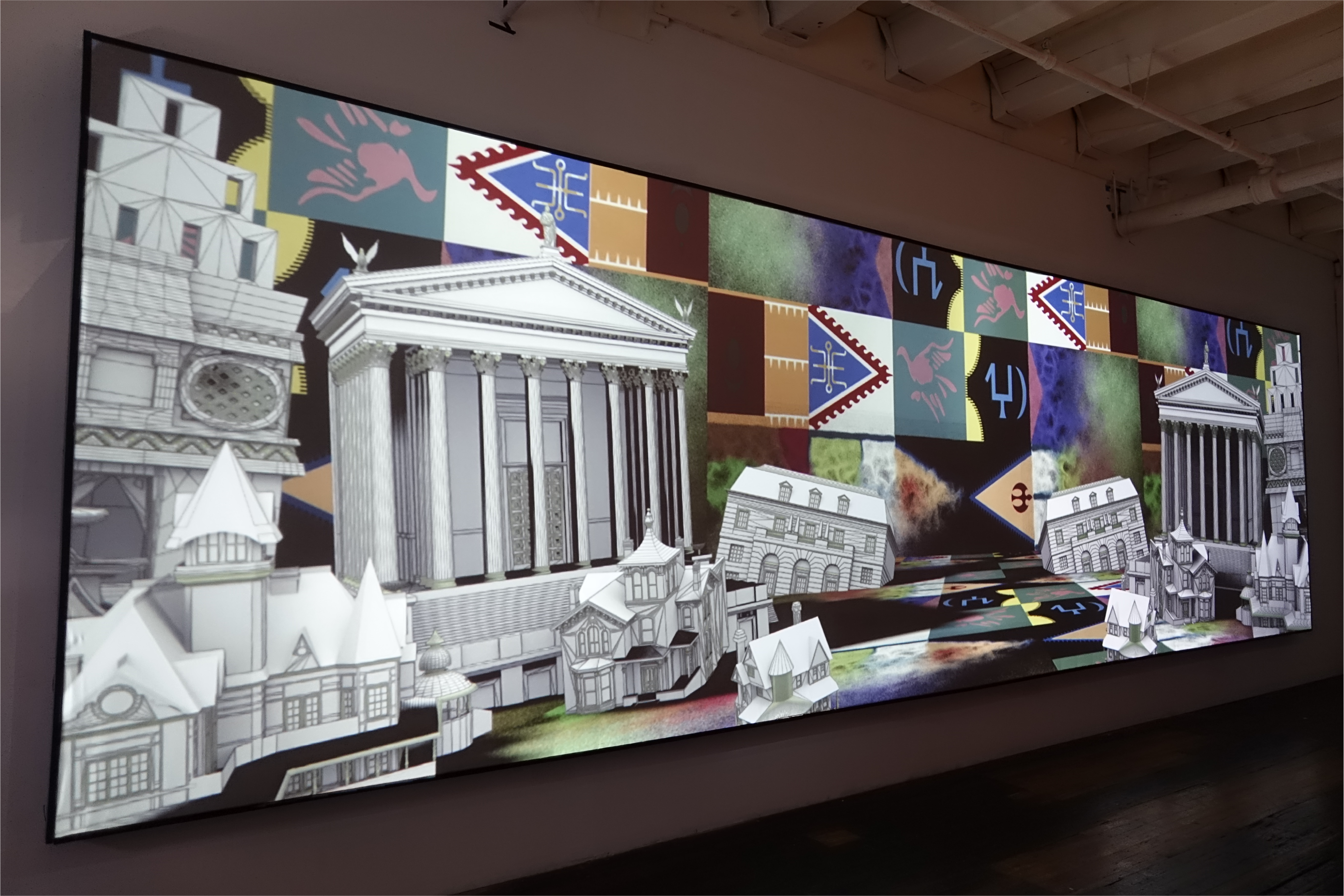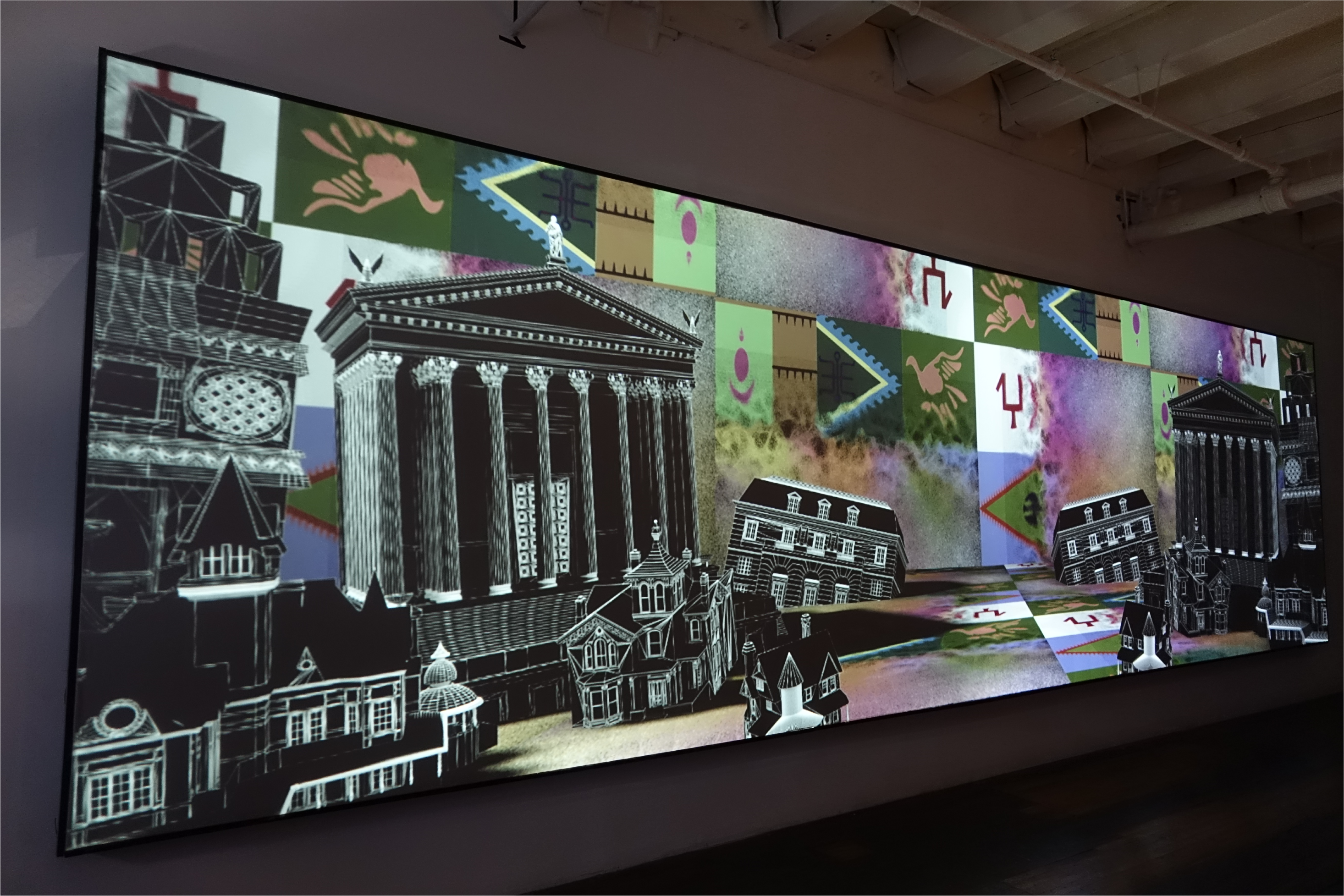






















THE DOLLS HOUSE
A multi-media exhibition
Transfer Gallery, Brooklyn NY
April 23 – August 6th, 2016
The Dolls House was a special series of video, drawing and sculptural work inspired by the media ballet The Dolls, based in the philosophical idea of the “eternal return” – the notion that history endlessly renews itself through a process of decadence, decay and rebirth. To embody this, Hart molded mathematical cycles into visual form, into a figurative flicker film defined by rhythmic animations of pulsing patterns that are mesmerizing and intentionally hypnotic as a result of their algorithmic qualities.
Hart’s brightly colored, algorithmic flickering patterns are the ultimate component of her contemplation on the passage of time and the death of kings. The passage of time is marked by a cyclical animation in which a track light moves around the virtual set, and cast shadows rotate from sunrise to sunset. The animated patterns are also based on the symbols of further collapsed empires - from the Faberge eggs of The House of Romanov to the banners and heraldry of Gengis Kahn and the Mongol Empire. Distributed among these are the current logos and graphical icons of our own multinationals, corporations and tech giants.
The end result is in some ways like a stroll through Times Square or a glitzy night in Vegas – but it is also paradoxically and strangely quite trance inducing and meditative, a vehicle for some kind of enlightenment.
Hart imagines an abstract computer warehouse filled with old dollhouses culled from the junk heap of some future history. She scoured Google’s 3D Warehouse – available as shareware for all users of Internet – for architectural monuments from a decadent history, past empires from all over the world. These include The Arch of Labna (a Mesoamerican archaeological site and ceremonial center of the pre-Columbian Maya civilization), the Roman Forum-of-Ceasar, Marie-Antoinette’s Le Petit Trianon (the small chateau on the grounds of Louis XIV’s Versaille, where she dressed as a milkmaid with her ladies-in- waiting), a Queen Anne House from Victorian England; the Dragomir Mansion from Bucharest; and the Paulwall House - still standing in our own ruined Detroit.
Like her doll houses, Hart’s 3D modelled tutus are also drawn from the scion of a fallen empire: the gowns of Margaret Theresa of Spain, among the last of the Spanish Habsburgs. This child princess was the central figure in the famous painting Las Meninas, a canonical masterpiece by the great 17th-century court painter, Diego Velazquez, and the subject of many of his paintings. Hart’s Velazquez princess dresses are modeled by computer and produced as mixed-media works on paper with projection mapping, and 3D printed sculpture for the exhibition.
The music for ‘The Dolls’ was specially composed by the media artist and digital composer Kurt Hentschlaeger and adapted for dual-channel audio in the Transfer Gallery Dolls House.
Kelani Nichole
April, 2016
Press:
“The Virtual Is Liminal: An Interview with Claudia Hart”, Susan Silas, Hyperallergic, May 24, 2016
“Enter a Twilight Zone of Ballet-Turned Digital Art”, Benoit Palop, The Creators Project>, Apr 5, 2016
“Futures // Virtual Exploration of the DiMoDa: An Interview with Alfredo Salazar-Caro and William James Richard Robertson”, Alice Bardos, Berlin Art Link, June 7, 2016